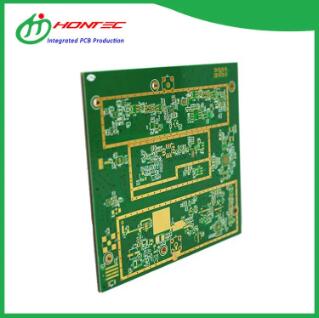Optimizing Layer Thickness in Multilayer Boards for Enhanced Performance
2024-07-24
Introduction
In the world of printed circuit boards (PCBs), multilayer boards have become the standard for complex electronic devices. One critical factor that influences the performance and reliability of these boards is the thickness of each layer. This blog will delve into how the thickness of each layer impacts the overall performance of a multilayer board and provide insights into optimizing layer thickness for various applications.
The Role of Layer Thickness in Multilayer Boards
Multilayer boards consist of multiple layers of conductive and insulating materials stacked together. The thickness of these layers is a key design parameter that affects several aspects of the board's performance, including signal integrity, thermal management, and mechanical stability.
1. Signal Integrity and Electrical Performance
1. Controlled Impedance
Impedance control is crucial for maintaining signal integrity, especially in high-frequency circuits. The thickness of the conductive and dielectric layers determines the impedance of the traces. Accurate control of layer thickness ensures that the impedance matches the design specifications, minimizing signal reflections and losses.
2. Signal Propagation
Thicker dielectric layers can increase the distance between signal layers, reducing the risk of crosstalk. This is particularly important in high-speed circuits where close proximity of signal traces can lead to interference and signal degradation.
3. Layer Stacking
The sequence and thickness of the layers affect the electrical performance of the board. For example, power and ground planes are often made thicker to provide low-resistance paths for current flow, improving power distribution and reducing noise.
2. Thermal Management and Heat Dissipation
1. Conductive Layer Thickness
Thicker copper layers can dissipate heat more effectively, which is vital for high-power applications. Efficient heat dissipation prevents overheating, ensuring the reliability and longevity of electronic components.
2. Thermal Via Structures
The thickness of the layers also impacts the design of thermal vias, which are used to transfer heat from the surface to the inner layers. Thicker layers provide better thermal conductivity, enhancing the board's ability to manage thermal loads.
3. Insulating Layers
The thickness of insulating layers affects the board's overall thermal resistance. Thicker insulating layers can help in isolating heat sources and protecting sensitive components from thermal stress.
3. Mechanical Stability and Durability
1. Structural Integrity
The mechanical strength of a multilayer board is influenced by the thickness of its layers. Thicker layers provide greater rigidity, reducing the risk of warping or bending under mechanical stress.
2. Flexibility Requirements
In applications where flexibility is needed, such as flexible PCBs, thinner layers are preferred. Balancing layer thickness to achieve the desired flexibility while maintaining durability is crucial for these applications.
3. Thermal Expansion Matching
The thickness and material properties of each layer affect the board's thermal expansion characteristics. Properly matching the thermal expansion coefficients of different layers prevents issues like delamination and cracking during thermal cycling.
Optimization Strategies for Layer Thickness
To achieve the best performance from a multilayer board, designers must carefully consider and optimize the thickness of each layer. Here are some strategies:
1. Application-Specific Design
Tailoring the layer thickness to meet the specific requirements of the application is essential. For high-speed digital circuits, precise impedance control and minimal crosstalk are critical, while power electronics may prioritize thermal management.
2. Material Selection
Choosing the right materials for each layer based on their electrical, thermal, and mechanical properties can significantly enhance performance. For example, using high-thermal-conductivity materials for conductive layers can improve heat dissipation.
3. Manufacturing Considerations
Working within the constraints of the manufacturing process is important for ensuring reliable production. Designers should collaborate with manufacturers to determine feasible layer thicknesses that meet performance requirements without compromising manufacturability.
4. Cost-Benefit Analysis
Balancing performance improvements with cost considerations is crucial. While thicker layers may offer better performance, they also increase material and production costs. Designers must find an optimal balance to deliver cost-effective solutions.
Conclusion
The thickness of each layer in a multilayer board plays a critical role in its overall performance. By understanding the impact of layer thickness on signal integrity, thermal management, and mechanical stability, designers can optimize multilayer boards to meet the demands of modern electronic applications. Through careful consideration of application requirements, material selection, manufacturing constraints, and cost factors, it is possible to achieve high-performance, reliable multilayer boards that enhance the functionality and longevity of electronic devices.



